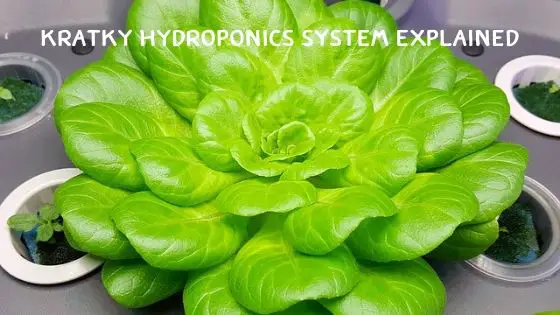I’m always on the look out for new ways to grow vegetables, and I’ve recently heard a lot about hydroponics. I’ve been looking at all different systems, and the most convenient for my purposes looks like the Kratky method. Once I had the Kratky hydroponics system explained to me I decided to have a go at it.
Hydroponic Systems Explained
As far as I can tell, there are 3 main methods of hydroponic growth systems so let’s have a quick look at them all and see what differences there are.
Aquaponics
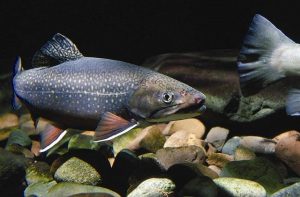
An aquaponic system uses the waste from fish or other aquatic animals as the nutrients to feed the growing plants. Aquaponic systems take a fair bit of room and need some sort of pump to maintain a constant flow of water from fish tank through to plants and so on. They can be beneficial because the end result is 2 cash crops, the plants and the fish.
The downside to aquaponic systems from my point of view, are the amount of space needed to house the system. Plus my knowledge of fishkeeping is limited and this would probably lead to the failure of the whole system.
Hydroponics
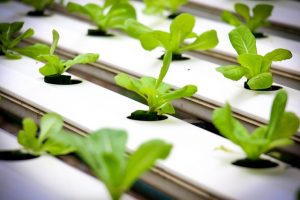
The hydroponic system uses similar principles and set up to the aquaponic system but with one main difference. There are no fish or other aquatic life, the plants recieve their nutrients through a chemical additive to the water flowing through the system. If you decide to go down this route there are many specialist websites and stores that will help you achieve your goal.
Again the main downside is the amount of space this system takes up, and the need for electricity on site for the water pump. The main advantage of both these systems is the total lack of soil. All that is used is water and added nutrients.
Kratky Hydroponics
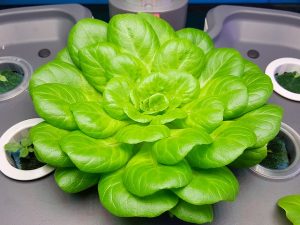
The Kratky hydroponic system was developed in the USA by professor Bernard Kratky and is a passive hydroponic technique. It works by filling a container with water to which nutrients have been added. Then suspending a net cup so that just the base of the cup touches the water.
The plant roots develop and grow into the water allowing the top of the container(below the plant) to fill with oxygen. There is no need for a pump, and as the water is used up by the plant, the oxygen levels rise in the container. Thus giving the plant it’s water, food and oxygen again without any soil.
The roots above the water level become absorbers of oxygen to sustain the plant. By the time the water has all gone the plant should be ready to harvest.
Kratky Hydroponics System Explained
The set up consists of a water and nutrient filled container with a lid and a hole is cut into the lid to allow the net cup to sit in the water. An inert growing medium like rockwall or coconut coir is placed in the net cup with the seed inside. This growing medium is then held in place with clay balls.
That’s about it, the benefits of this system include scale, the system can be started with a small glass jar. Or scaled up to the size of a swimming pool with the same results(as long as the basics have been observed). Another benefit is there is no reliance on any power source, and there is no aquatic life to worry about.
One very important point that needs a mention is algae growth and how to avoid it.
Kratky Hydroponics System Explained Avoiding algae growth
Why is it important to deter the growth of algae in a Kratky hydroponic set up? The reason is algae will feed on the nutrients in the water and this will eventually starve your plants. It’s just like allowing weeds to grow in a conventional garden set up.
How To Avoid Algae Growth
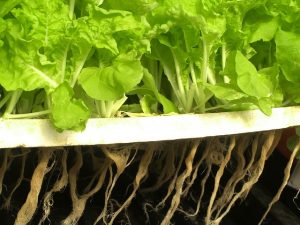
The way to do this is to not allow any light to penetrate to the water at all. Now this can entail as much or as little work as you would like to do. The easiest way is to cover the container with newspaper or cardboard.
The most effective method however, is to paint the container a dark colour and of course cover the top, apart from where the plant is actually growing. That’s one of the uses for the clay balls, they not only keep the plant anchored in the net cup, but also keep light out.
Which Plants Do Best In A Kratky Hydroponic System
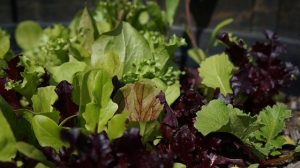
There are many websites and youtube videos showing the success people have had using this system. In some extreme cases radishes, tomatoes, chillies, and even potatoes have been given the Kratky treatment. This system was actually developed with leafy green vegetables in mind.
Leafy greens don’t use as much water as other greedier plants, and this allows the water to last until harvest time. If you do decide to try something other than leafy greens then be prepared to have to add more water and nutrients at some point. Remember to leave space at the top of the container for oxygen.
What Are Leafy Greens?
Below is a list of some examples of leafy greens to try and grow Kratky style.
- Spinach
- Bok Choi
- Kale
- Swiss Chard
- Lettuce
- Collard Greens
- Leaf Beet
Nutrients
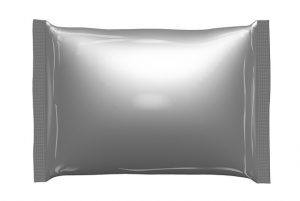
When adding nutrients to the water in a Kratky type growing system be aware of what you are trying to achieve. The nutrients should be exactly or as near exact as would be found in fertile soil. It’s no good guessing at this, buy a decent nutrient mix from a reputable supplier.
These nutrients need to be specifically for hydroponic growth, don’t just use tomato feed or another plant food. Get the food right and it should be plain sailing. It might take some research to find the best nutrient mix, depending where in the world you are.
I have just purchased “Hydrogrow” over here in the UK, but there are many alternatives. I chose hydrogrow because it’s a one part universal feed for all stages of growth. As I am a newbie at this I figured that was my best option.
So that’s the growing-guides Kratky hydroponics system explained inthe easiest way I can. Please let me know in the comments if I’ve missed anything out.

